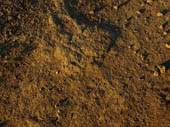
Purpose
To compare the rise of water by capillarity in sandy, clayey, and loamy soil
Additional information
Capillarity is the phenomenon by which water rises in a cylindrical column. The narrower the column the higher the capillarity; similarly, the denser the substratum present in the column, the higher the capillary effect.
This is the reason why clayey and loamy soils are better options when it comes to growing healthy plants; along with being rich in nutrients it also retains moisture and helps water reach the transport channels of plants thereby helping them grow well.
Sponsored Links
Required materials
- Sandy soil sample
- Clayey soil sample
- Loamy soil sample
- 3 Glass tubes (open at both ends)
- Water
- Beaker to hold the glass tubes
- Glass wool to plug one end of each of the glass tubes
Estimated Experiment Time
Approximately 10 minutes to set up the apparatus and 1-2 days to carry out the observations
Step-By-Step Procedure
- 1. Plug one end of the glass tubes using glass wool.
- 2. Pack 3 long glass tubes tightly with dry sandy, clayey and loamy soil; clearly label each tube.
- 3. Fill the beaker with water.
- 4. Immerse the tubes vertically in the beaker with the plugged end towards its base.
- 5. Make note of the levels of the water as it rises in the glass tubes containing each type of soil.
Note
N/A
Observation
Initially the water rises fastest in the sand, followed by the loamy soil, and clayey soil. However after a day or two, the water fails to rise any higher in the tube containing sand, whereas in those containing clay and loam continue to rise until it reaches the top of the tube. The level in the loam may rise and drop but usually stabilizes very close to the water level in the tube containing clayey soil.
Result
Clayey soil has the highest capillarity, followed by loamy and sandy soil.
Sponsored Links
Take a moment to visit our table of Periodic Elements page where you can get an in-depth view of all the elements,
complete with the industry first side-by-side element comparisons!